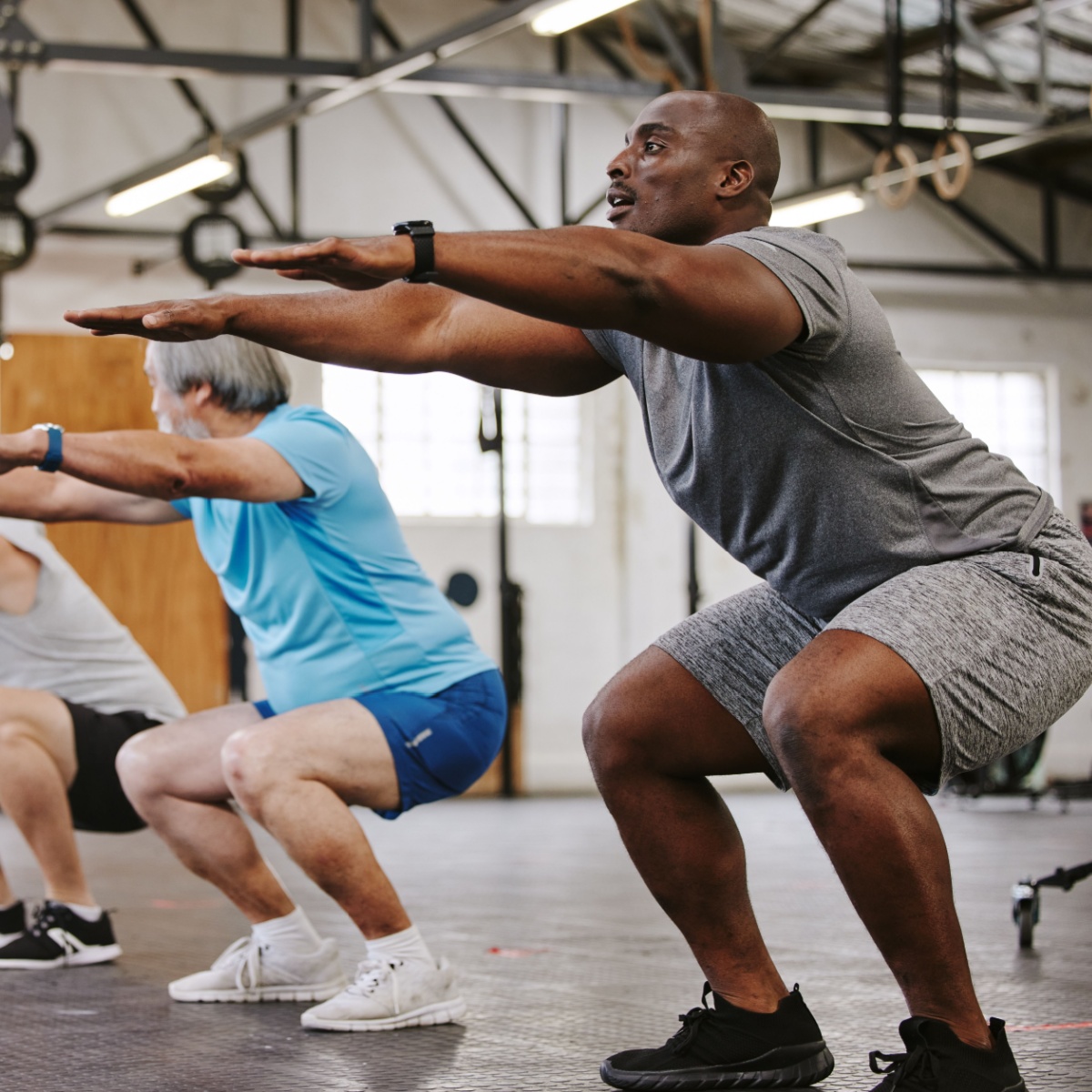When we think of exercises, we like to believe that each one has nothing but great benefits for our bodies. While exercise is a vital component of a healthy lifestyle at any age, offering benefits such as improved cardiovascular health, increased strength, and enhanced mood, some workouts can pose specific risks, especially after your 50s. As we age, our bodies may experience changes in joint flexibility, muscle mass, and bone density, making certain high-impact or strenuous exercises potentially risky.
We checked in with Bryan Wright, a physical therapist and founder/CEO of Wright Physical Therapy, to learn about three surprising exercises that could be hazardous for those over 50. According to Wright, the ones to steer clear of are high-intensity interval training (HIIT), crossfit, and long-distance endurance events. Read on to learn more.


High Intensity Interval Training (HIIT)
HIIT usually involves rapid, high-impact movements that can place a lot of stress on the joints. As you get older, your joints may become less flexible than before and more prone to injury, making these exercises potentially problematic.
Wright says, "High intensity interval training spikes blood pressure and heart rate, which can be dangerous for those with heart conditions or high blood pressure, common in older adults. The intensity increases the risks of cardiac events."

CrossFit
CrossFit includes complex exercises such as Olympic lifting, gymnastics, and high-intensity interval training. These workouts require excellent technique and coordination, which can be challenging for those with reduced flexibility or even experience. This raises the risk of strains or falls, especially among older individuals.
"CrossFit involves heavy weights and rapid movements that often cause muscle strains or tears in older adults with less flexibility and mobility. The intensity also amplifies risks of heart attacks for older adults," Wright notes.

Long-distance endurance events
Repeated, high-impact activities like running or cycling for long periods of time can stress joints, muscles, and tendons. With older people, they may experience decreased joint flexibility, muscle mass, and bone density, making them more prone to injuries such as strains, sprains, or stress fractures.
These activities can also lead to dehydration and imbalances in electrolytes. Older adults may have a reduced ability to regulate body temperature or adapt to extreme weather conditions, which ends up increasing the risk of heat exhaustion or hypothermia.
"Long-distance endurance events require extensive cardiovascular fitness and endurance that can deplete energy stores, dehydrate, and raise core temperature to unsafe levels in older adults. The impact also increases the risk of injuries being harder to heal for those over 50," Wright notes.
The Bottom Line
In conclusion, while exercises can offer numerous benefits, including improved heart health and mental resilience, they also come with specific risks for individuals over 50. The physical demands of these workouts can strain the cardiovascular system, stress joints and muscles, and make it harder for the body to recover. To minimize these risks, older adults should take a cautious and well-informed approach, including talking with healthcare professionals, adapting training regimens to their specific needs, and prioritizing proper hydration and recovery.


























